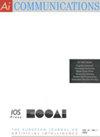使用DeepInsight特征空间对齐预测遗传规划迁移学习的成功
IF 1.4
4区 计算机科学
Q4 COMPUTER SCIENCE, ARTIFICIAL INTELLIGENCE
引用次数: 0
摘要
在迁移学习(TL)中,使用在一个问题上训练的模型来简化在第二个问题上的学习过程。TL在深度学习方面取得了令人印象深刻的成果,但在遗传规划(GP)方面却鲜有研究。此外,预测TL何时或为什么会成功是一个悬而未决的问题。这项工作提出了一种确定两个问题何时可以兼容TL的方法。该问题首次针对TL和GP进行了研究,重点是多类分类。使用一组参考问题,将每个问题对分为两组。相对于基线方法,TL兼容问题是TL成功的问题对,而TL不兼容问题是TL失败的问题对。DeepInsight用于提取每个问题的特征空间的二维投影,并通过注册两个问题的特征空间表示来计算相似性度量。结果表明,两组之间的差异具有统计学意义。该建议不需要模型训练或推理,并且可以应用于来自不同领域的问题,具有不同数量的样本,特征和类。本文章由计算机程序翻译,如有差异,请以英文原文为准。
Predicting the success of transfer learning for genetic programming using DeepInsight feature space alignment
In Transfer Learning (TL) a model that is trained on one problem is used to simplify the learning process on a second problem. TL has achieved impressive results for Deep Learning, but has been scarcely studied in genetic programming (GP). Moreover, predicting when, or why, TL might succeed is an open question. This work presents an approach to determine when two problems might be compatible for TL. This question is studied for TL with GP for the first time, focusing on multiclass classification. Using a set of reference problems, each problem pair is categorized into one of two groups. TL compatible problems are problem pairs where TL was successful, while TL non-compatible problems are problem pairs where TL was unsuccessful, relative to baseline methods. DeepInsight is used to extract a 2D projection of the feature space of each problem, and a similarity measure is computed by registering the feature space representation of both problems. Results show that it is possible to distinguish between both groups with statistical significant results. The proposal does not require model training or inference, and can be applied to problems from different domains, with a different a number of samples, features and classes.
求助全文
通过发布文献求助,成功后即可免费获取论文全文。
去求助
来源期刊

AI Communications
工程技术-计算机:人工智能
CiteScore
2.30
自引率
12.50%
发文量
34
审稿时长
4.5 months
期刊介绍:
AI Communications is a journal on artificial intelligence (AI) which has a close relationship to EurAI (European Association for Artificial Intelligence, formerly ECCAI). It covers the whole AI community: Scientific institutions as well as commercial and industrial companies.
AI Communications aims to enhance contacts and information exchange between AI researchers and developers, and to provide supranational information to those concerned with AI and advanced information processing. AI Communications publishes refereed articles concerning scientific and technical AI procedures, provided they are of sufficient interest to a large readership of both scientific and practical background. In addition it contains high-level background material, both at the technical level as well as the level of opinions, policies and news.
 求助内容:
求助内容: 应助结果提醒方式:
应助结果提醒方式:


